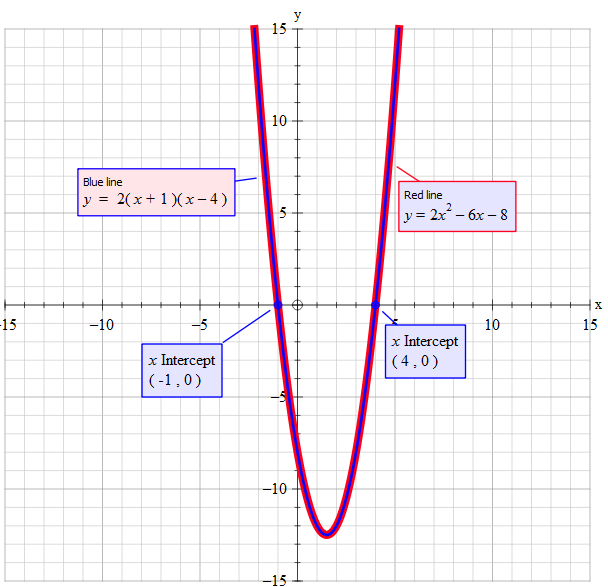How do you find the roots, real and imaginary, of y= 2 (x + 1) (x - 4) using the quadratic formula?
2 Answers
Explanation:
You don't need a quadratic formula for this, since it is in the factored form, you just need to set each expression in the brackets equal to zero, and then find the roots.
Explanation:
As we are instructed to use the formula it is perhaps better to change the given equation into the format of
Not only that, I suspect that part of the agenda of this question is to see if you can 'handle' expansion of brackets.
Multiplying everything inside the right brackets by everything in the left.
~~~~~~~~~~~~~~~~~~~~~~~~~~~~~~~~~~~~~~~~~~~~
Thus we have;
So
As the content of the root (determinate) is not negative there are no imaginary roots. That is, in this case, the graph crosses the axis.
Note: if the determinate is 0 then the x-axis is tangential to the max/min
 Tony B
Tony B


